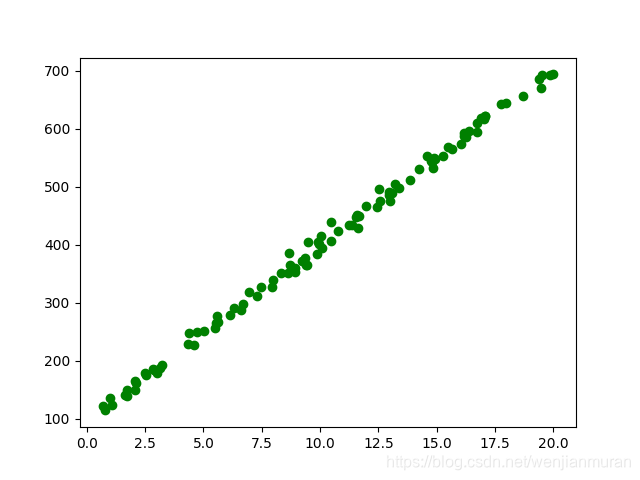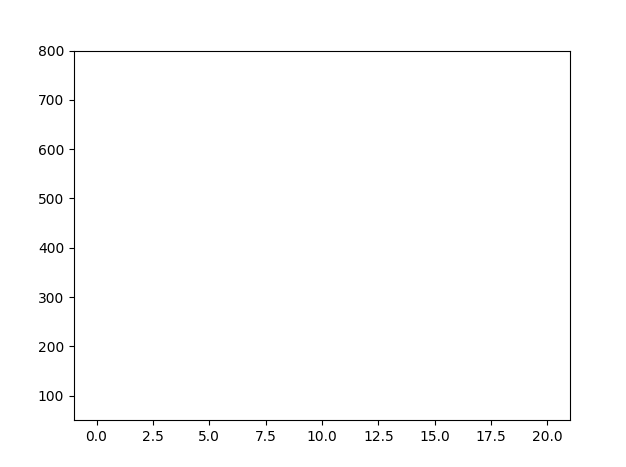本文首发在我的个人博客:https://jlice.top/p/7hmgi/。欢迎大家前去参观,么么哒~
我们先随机生成一些数据:
import numpy as np
train_X = 20 * np.random.rand(100).astype(np.float32)
train_Y = (30 * train_X + 100 + 10 * np.random.randn(100)).astype(np.float32)

预期拟合的函数为:
\[ Y = 30 X + 100 \]
现在我们使用线性回归,假设拟合的函数为:
\[ y = W x + b \]
先给W、b赋初值,然后计算y和实际值的差距,并使用梯度下降算法来减小差距。定义这个差距(损失函数)为:
\[ C = \frac 1 {2m} \sum _{i=1} ^{m} (Y_i - y_i)^2 \]
现在使用TensorFlow来完成。
首先定义变量:
import tensorflow as tf
W = tf.Variable(1.0)
b = tf.Variable(0.0)
X = tf.placeholder(tf.float32)
Y = tf.placeholder(tf.float32)
y = tf.add(tf.multiply(W, X), b)
cost = tf.reduce_sum(tf.pow(Y-y, 2))/(2*train_X.shape[0])
W、b是待训练的参数,使用tf.Variable;X、Y接收输入的数据,使用tf.placeholder。
然后开始训练:
init = tf.global_variables_initializer()
train = tf.train.GradientDescentOptimizer(0.2).minimize(cost)
with tf.Session() as sess:
sess.run(init)
for i in range(100):
for tx, ty in zip(train_X, train_Y):
sess.run(train, feed_dict={X: tx, Y: ty})
if (i+1) % 10 == 0:
c = sess.run(cost, feed_dict={X: train_X, Y: train_Y})
print('epoch: %d cost:%f y = %f x + %f' % (i + 1, c, sess.run(W), sess.run(b)))

可以看到,拟合的结果还不错。





 本文介绍使用TensorFlow进行线性回归拟合。先随机生成数据,预期拟合函数为Y = 30X + 100,假设拟合函数为y = Wx + b,给W、b赋初值,用梯度下降算法减小y与实际值差距,定义损失函数,最后完成训练,拟合结果不错。
本文介绍使用TensorFlow进行线性回归拟合。先随机生成数据,预期拟合函数为Y = 30X + 100,假设拟合函数为y = Wx + b,给W、b赋初值,用梯度下降算法减小y与实际值差距,定义损失函数,最后完成训练,拟合结果不错。
















 226
226

 被折叠的 条评论
为什么被折叠?
被折叠的 条评论
为什么被折叠?








